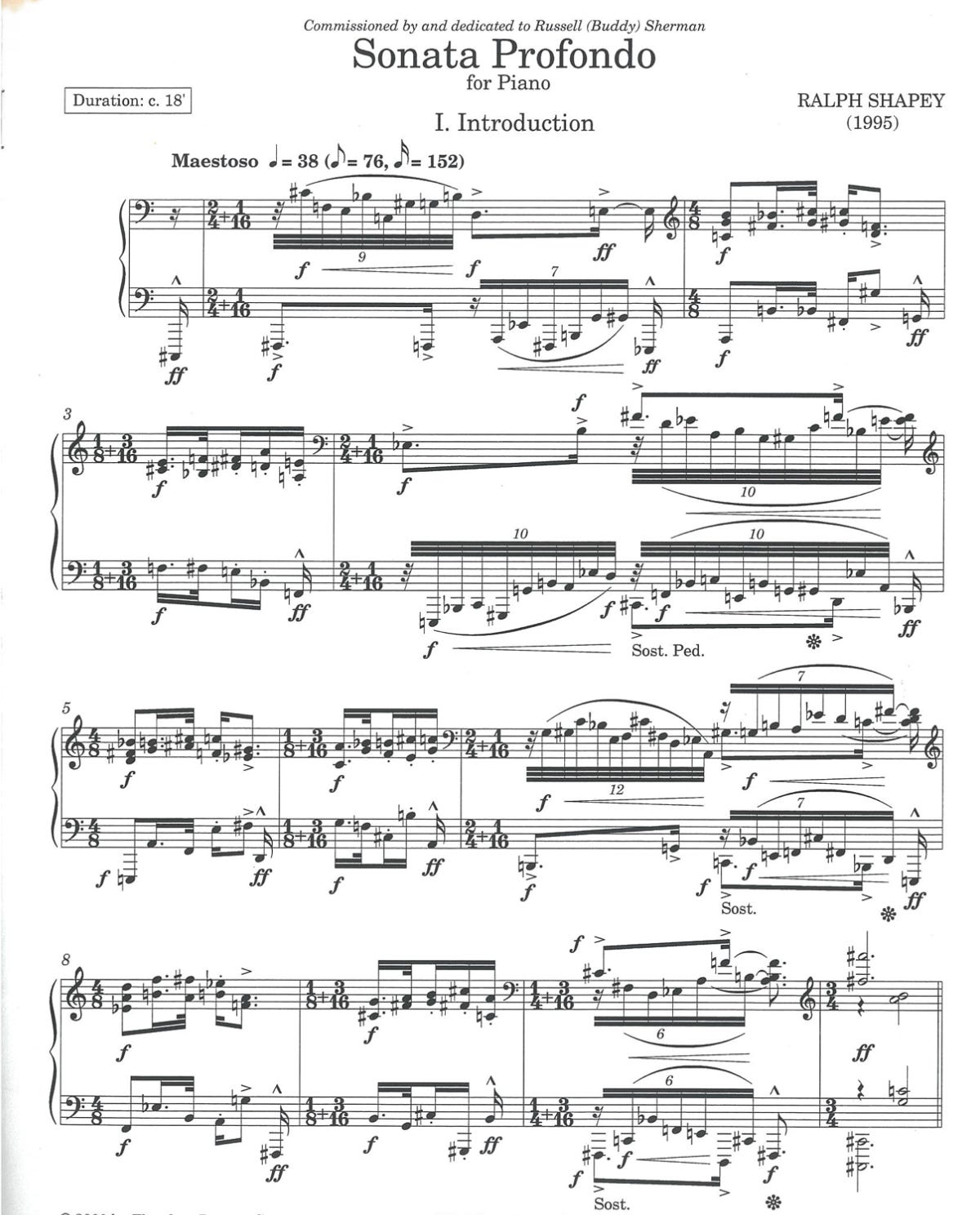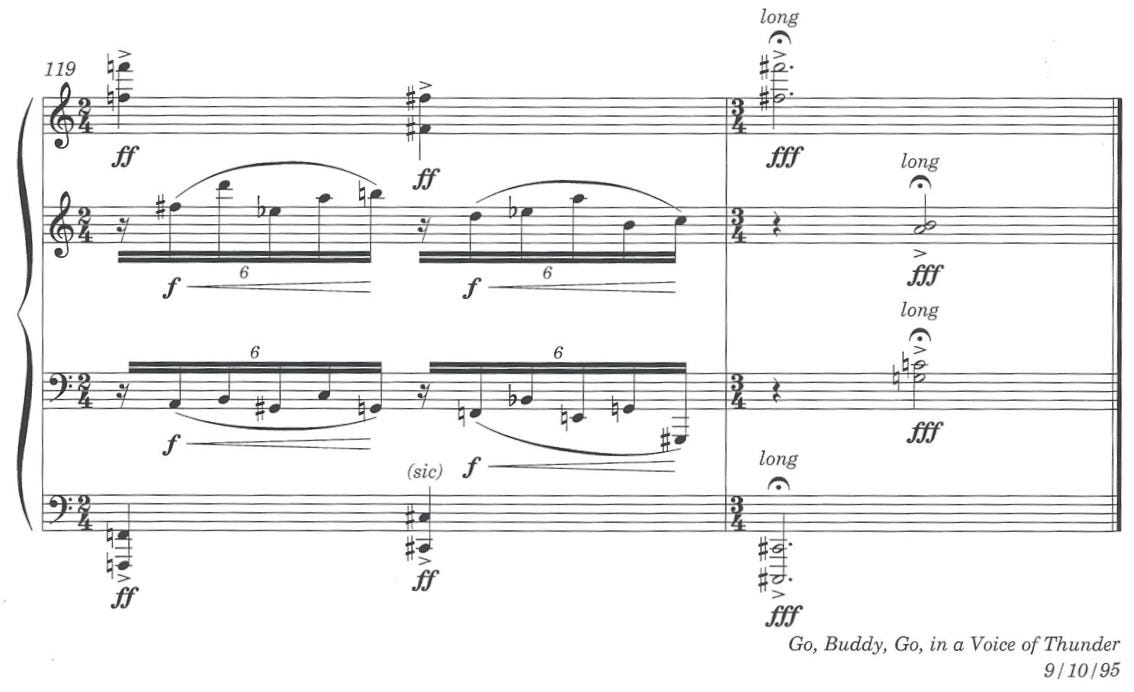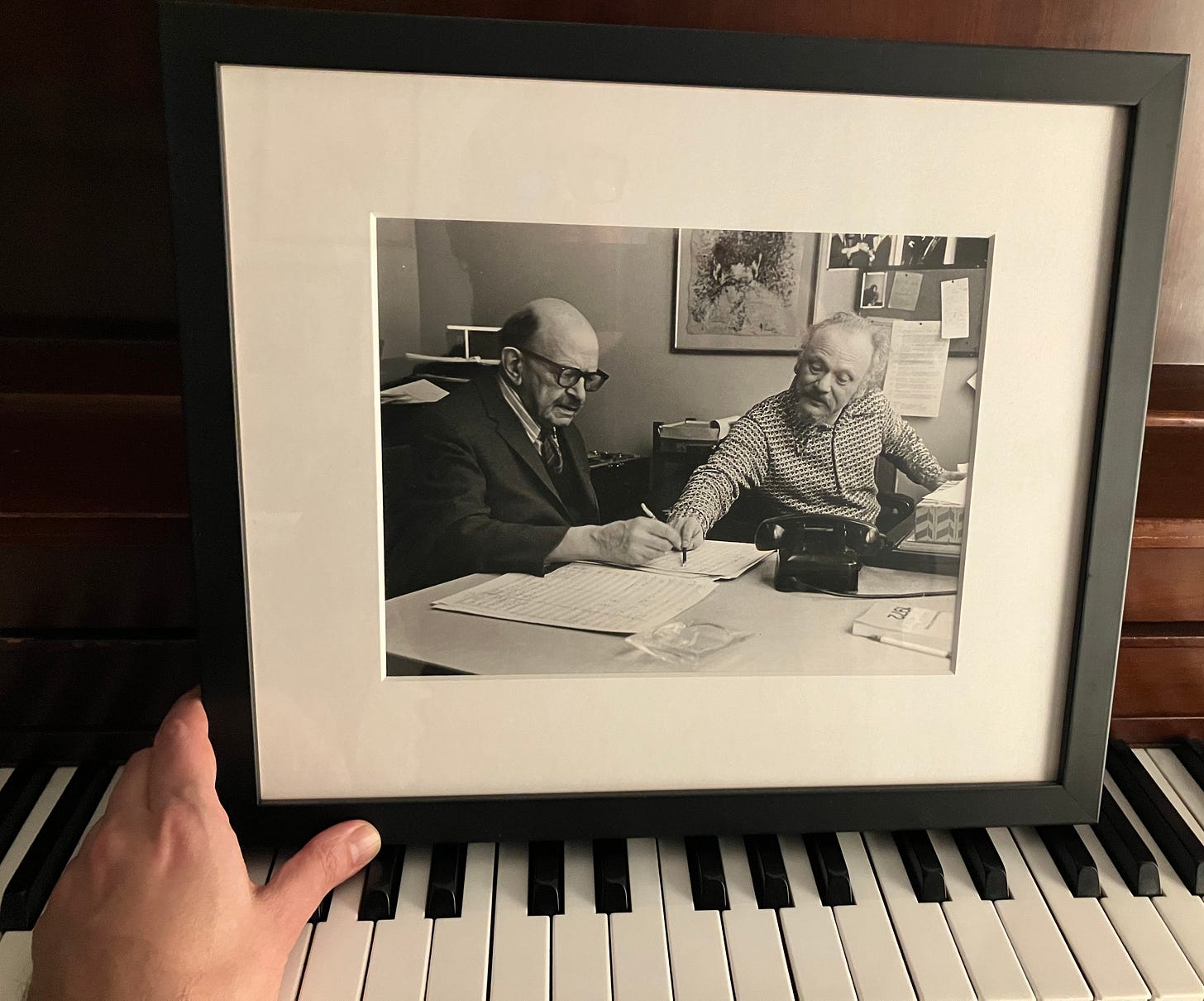TT 341: Piano Sonatas by Roger Sessions and Ralph Shapey
part three of three posts connected to Russell Sherman
To review: At times my writing is a kind of open diary, where I make connections and memories public. I never met the late Russell Sherman, I didn’t see him perform, nor am I any kind of an expert in his complete discography. But he touched me quite deeply in a few ways.
This is the final installment of the Russell Sherman series and also the final writing of 2023. Happy New Year!
Interview with Gunther Schuller and Russell Sherman/The Not Quite Innocent Bystander: Writings of Edward Steuermann/pedaling/Chopin/Beethoven
Russell Sherman suggests Cramer études for me and my students
Roger Sessions as played by Randall Hodgkinson, Ralph Shapey as played by Russell Sherman
Atonality is very important. One simply must love and ingest the masters of 20th-century atonal music to make creative music in the 21st. In jazz and improvised piano, Cecil Taylor and his lineage loom large; I also have a personal predilection for Paul Bley and his lineage.
Then there is “classical” music, or whatever you want to call it. Arnold Schoenberg is the patriarch.
Schoenberg’s pianist was Edward Steuermann, and a substantial conversation between two important Steuermann students, Gunther Schuller and Russell Sherman, is collected in The Not Quite Innocent Bystander: Writings of Edward Steuermann, a passage I read avidly when I was 19 or 20 years old in 1992 or 1993.
One of the pianists positively mentioned in passing is Sherman’s student Randall Hodgkinson. As with Johann Baptist Cramer, I filed this name away, and when I saw a used LP of modern piano music by Roger Sessions and Donald Martino played by Hodgkinson, I picked it up.
The Second Piano Sonata of Roger Sessions (written in 1946) struck me like a thunderbolt. It was fancy, atonal, and very rhythmic: Sessions’s syncopations swarmed from every corner.
Eventually I got the score and learned the notes to the first movement. I was really into this piece! There’s no way I could have prepared The Rite of Spring for The Bad Plus without going to Roger Sessions boot camp first. Taking on pages crammed with atonal (or at least highly chromatic) notes requires a particular kind of relaxed but focused discipline. At this point I can start the process on this sort of thing with relative equanimity, but I still require a double espresso first.
I was so involved in this aesthetic that I even took a lesson with composer/pianist Robert Helps in the year 2000, not long before he passed away. (Helps was friends with my local NYC teacher, Sophia Rosoff, for they both had studied with the legendary Abby Whiteside. I visited Helps at home in Florida when on tour with the Mark Morris Dance Group.)
Helps studied composition with Sessions and advocated for the Sessions sonatas as a high-powered pianist. I witnessed first-hand how the Helps/Sessions combination was known and celebrated in rather elite circles. Helps’s own excellent recording of Sessions 2 is live at Merkin Hall: I was at that very performance along with Elliott Carter, Milton Babbitt, Garrick Ohlsson, and Alfred Brendel.
Going in to my lesson, I was certain that Helps was going to be impressed I was playing Sessions 2 — but after I banged through the first movement, Helps made it clear that he wasn’t that impressed.
“How long have you been working on this piece?” A couple of months. “Well, I’ve been working on it for 40 years.” Helps closed my score, and we talked about Chopin études instead.
Helps did give me one anecdote about Sessions 2: The main melody can be sung to the tune of, “Ro-ger Ses-sions! Ro-ger Ses-sions!” This was a rather terrible and amusing fact to learn. While I feel a little bad “paying it forward” by sharing this indelible fact with my readers, some things simply must be done. Apologies.
“Ro-ger Ses-sions! Ro-ger Ses-sions!”
A few years later, in the internet era, I was impressed by Kyle Gann’s advocacy for Ralph Shapey. Gann (who I admired as both composer and critic) rarely had a good word for “conventional” atonal American “classical” music of the Elliott Carter/Milton Babbitt variety, so it was pretty surprising when he praised Ralph Shapey, who at first blush I had thought was in the same camp. Gann said of Shapey’s Fromm Variations, “I’m hard put to name another piece of such absolutely abstract, atonal, ‘difficult’ music that engages you so directly and makes such ineffable intuitive sense.”
Huh. It turned out I already had a CD with a great Shapey piece, namely Sonata Profondo on the Russell Sherman album Premieres and Commissions issued by Gunther Schuller’s label GM.
When I started listening carefully, it became obvious that each movement of Sonata Profondo was a distinct character study and that certain sonorities recurred like signposts. Indeed, the work is very easy to follow if you can meet it on its own terms. As Gann suggested, there is a narrative — which is in sharp contrast to Elliott Carter and Milton Babbitt, who both have a more fantastical and stream-of-consciousness structure to their more famous atonal sounds.
American music! Come sit at this table! My attraction to the Roger Session’s Second Piano Sonata is primarily rhythmic. I can easily connect Sessions 2 to the driving syncopations of Scott Joplin, even the swinging mayhem of Earl “Fatha” Hines. In Shapey’s Sonata Profondo I love the harmony. Each chord is a stark jewel almost worthy of Thelonious Monk. Paul Bley played some of these Shapey structures at every single gig.
Both pieces tell a story, both pieces are accessible, both are not too long or too hard. If a pianist can play Beethoven and Brahms, they can play Sessions 2 and Sonata Profondo.
Russell Sherman and Ralph Shapey were friends, and Shapey uses Sherman’s nickname “Buddy” in the dedication “Commissioned by and dedicated to Russell (Buddy) Sherman.”
As it would turn out, Sonata Profondo would be Shapey’s last significant piano piece and the recording Premieres and Commissions would be Sherman’s only solo recital of 20th century music. The rest of the CD with music by Gunther Schuller, Robert Helps, George Perle, and a little bit of papa Schoenberg is also excellent: In other words, Russell Sherman finally makes good on the promise of being Edward Steuermann’s star pupil in the realm of atonal piano music. As I say in the first Sherman post, I personally find Steuermann’s records to be a bit underwhelming, which is not the case of Sherman’s fully-realized Premieres and Commissions.
Arnold Schoenberg → Edward Steuermann → Russell Sherman (and Schuller/Helps/Perle/Shapey).
All the composers and performers (besides Schoenberg) were alive during the Premieres and Commissions recording sessions in 1999, and now they are all gone.
Robert Helps (1928 - 2001)
Ralph Shapey (1921 - 2002)
George Perle (1915 - 2009)
Gunther Schuller (1915 - 2015)
Russell Sherman (1930 - 2023)
At the end of the score to Sonata Profondo, Ralph Shapey commands Russell Sherman, “Go, Buddy, Go, in a Voice of Thunder.”
Roger Sessions and Ralph Shapey knew each other but were not exactly peers. Sessions was older, received many conventional commissions, and had a fair amount of institutional respect. The nine Sessions symphonies were all played more than once. While nothing has truly become standard repertoire, I believe almost everything was recorded, including at least a half-dozen versions of the Second Piano Sonata (although I still have never heard one better than brilliant Randall Hodgkinson).
Shapey was a comparative outsider. Famously, the Pulitzer Board overturned the Committee and denied him the Prize. The discography offers but a slim fraction of what Shapey composed. (It seems unlikely that any other pianist is plotting to go up against Russell Sherman in Sonata Profondo.)
In 2024 both composers are a bit out of style, of course. Between them Shapey might have a slightly better chance of being rediscovered, for he is just so good and so pure of heart. My friends like him! Matthew Guerrieri told me that Shapey’s attitude and emotional directness brought to mind Charles Bukowski. Miranda Cuckson has personally uploaded her extensive and sensational Shapey violin recordings to YouTube, some of which feature Blair McMillen on piano.
FWIW, I got to namecheck the maestro in The New York Times this past summer when Seth Coulter Walls reviewed Miranda and myself in recital. When Walls asked me about my own piano sonata, I said, “I feel James P. with me. I feel Erroll Garner with me. And I feel Ralph Shapey.”
I have such respect for the way Roger Sessions and Ralph Shapey fought so hard for such spectacular pitches. A rare and expensive photo of them in consultation together is always near my home piano.










Shapey was at the University of Chicago during my teenage years and my bohemian aunt and uncle dragged my fourteen year old self--enamored of Monk, Miles, Lead Belly, and Dylan--down to Hyde Park for a recital by his Contemporary Chamber Players. I can’t remember what was played, and I certainly can’t say I enjoyed it, but some things stay with you. As I ventured deeper into Cecil Taylor and acquainted myself with later Stravinsky (cf. your reference to the Plus Rite--one of the recordings I’m most proud of having released in my career) I began to make some connections, as well as with Braque, Picasso, and Rauschenberg. Almost 60 years later, I wish I could remember more and get back there. Cheers!